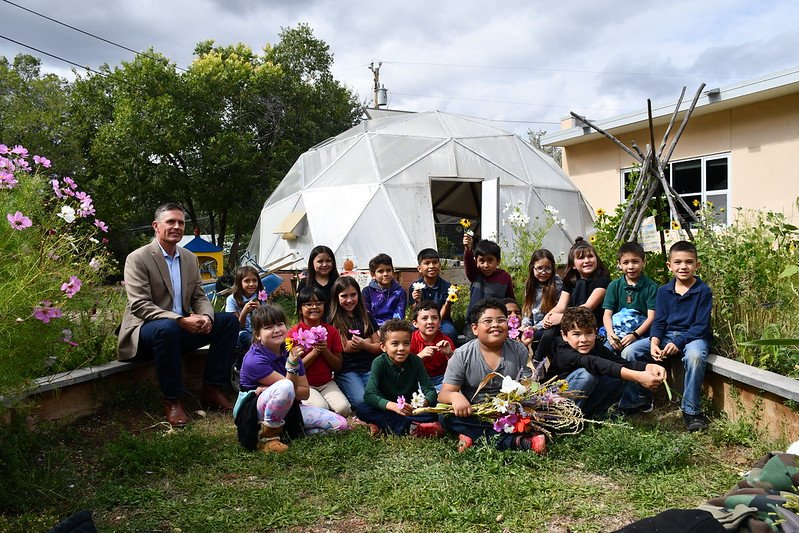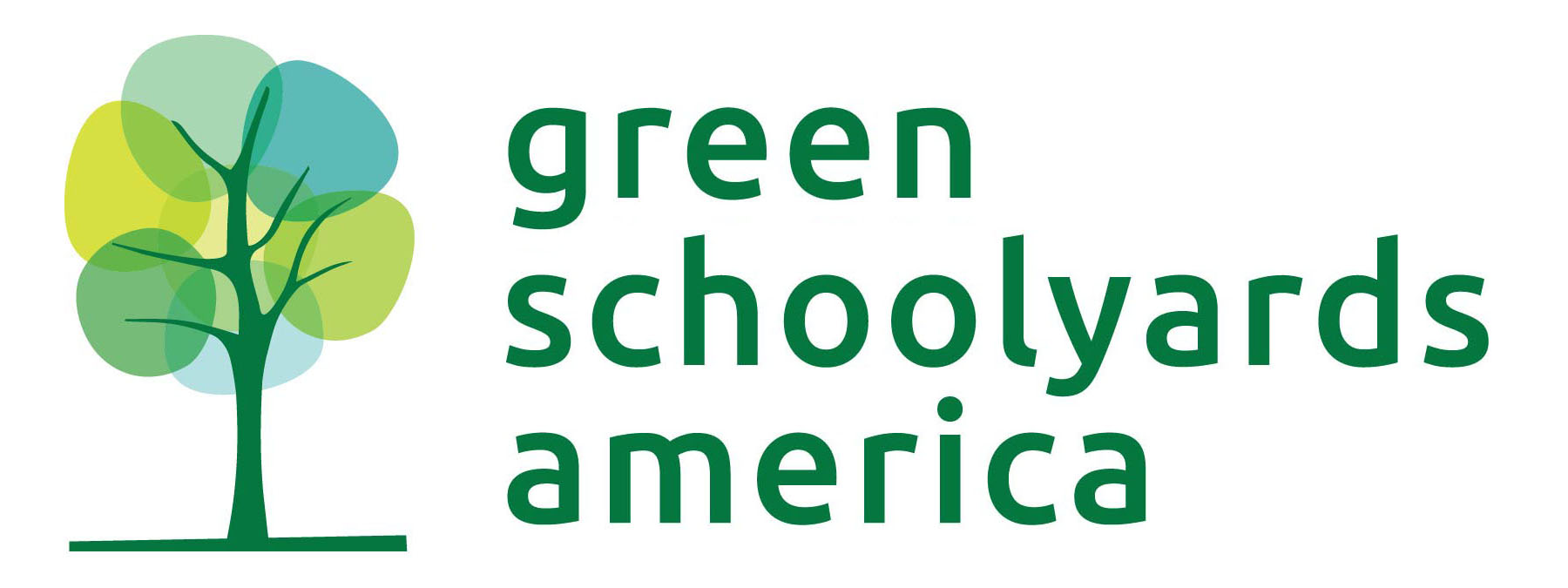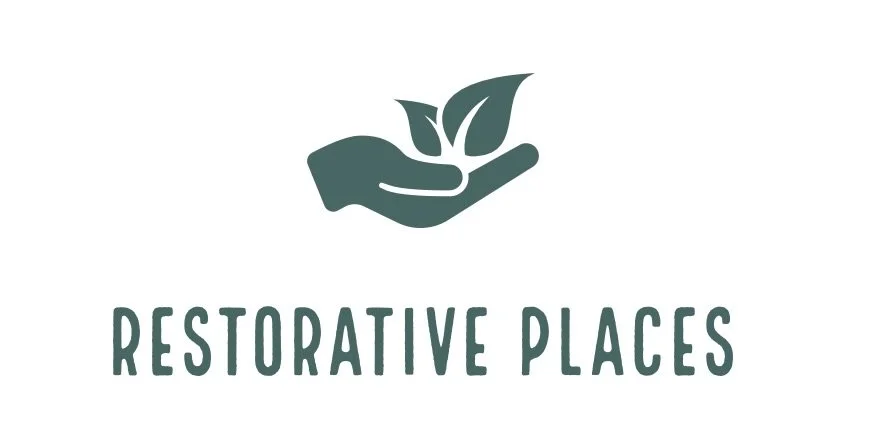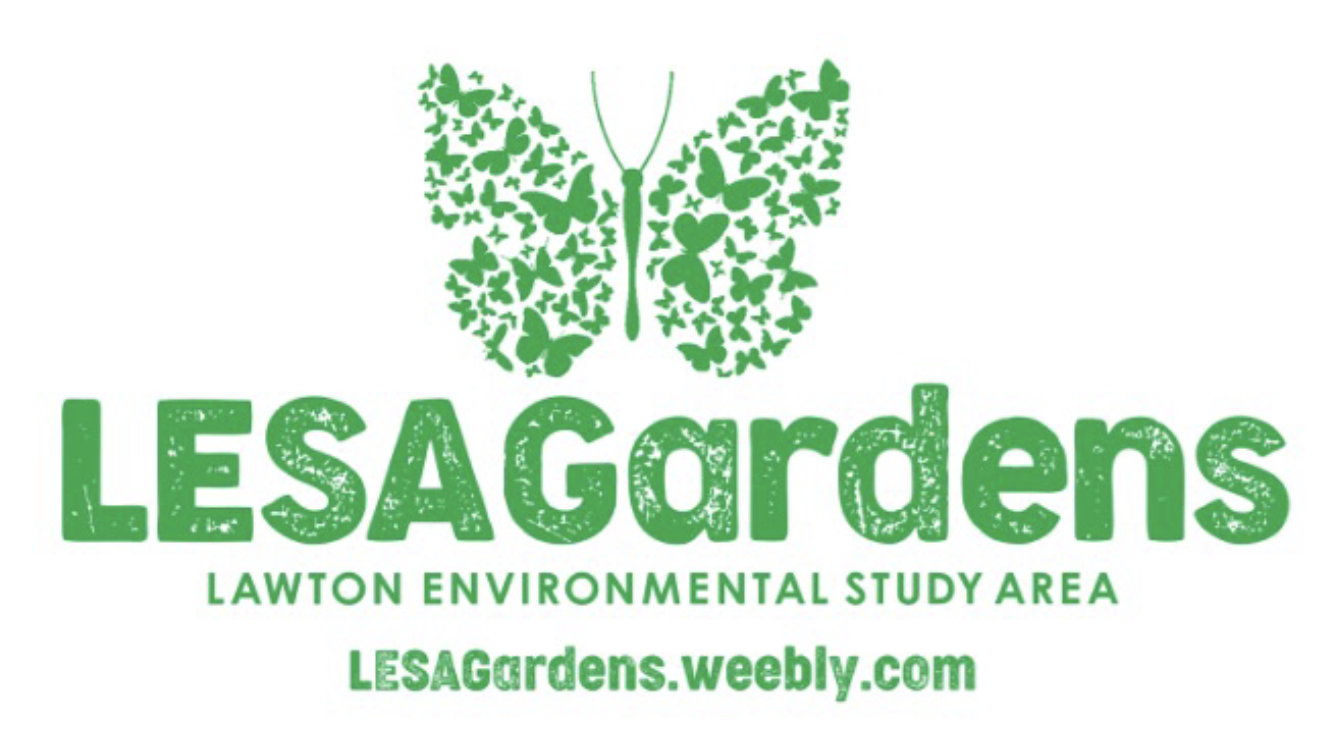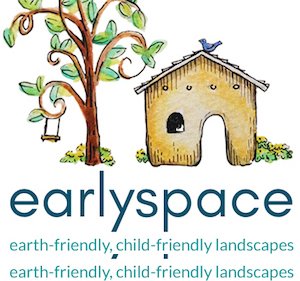The Revitalizing America’s Schoolyards Act
The Revitalizing America’s Schoolyards Act (formerly the Living Schoolyards Act, S-1538), soon to be introduced into the United States Senate by Senator Martin Heinrich (D-NM), is a groundbreaking bill that will direct important federal resources towards upgrading school grounds into nature-based learning environments that help reduce the impacts of extreme weather while providing students access to shaded play, recreation, gardening and outdoor learning.
In the U.S. nearly 50 million children attend school on millions of acres of public land that is largely paved in asphalt. This land is a vital public resource that could do more to support the health and education of the students who use it. The Revitalizing America’s Schoolyards Act (RSYA) will begin to address this need. This legislation is an updated version of the Living Schoolyards Act, which aims to provide funding and support for the creation of green and living schoolyards.
Details and impact
The Revitalizing America’s Schoolyards Act:
Creates a Revitalizing America’s Schoolyards Grant Program;
Defines a Revitalized Schoolyard as a park-like outdoor environment at an elementary or secondary school that has been updated to strengthen local ecological systems, provide a range of hands-on learning resources, and foster nature play and social opportunities while enhancing the health and well-being of children and adults. These schoolyards may include trees and plants where children can access them; cultivated gardens; outdoor meeting and gathering areas; and other elements designed by, and for, the students and the surrounding community;
Allows funds to be used to plan and implement a revitalized schoolyard(s);
Prioritizes funding for communities with high rates of students receiving free and reduced meals program; and
Requires a catalog of best practices for creating these spaces
Help Promote the Bill
Green Schoolyards America worked closely with Senator Heinrich on its creation and is partnering to build support for this bill. Below, we have put together tools to support your individual or organization-level advocacy.
Endorse the bill
If your organization (nonprofit, business, agency, school, firm, etc.) would like to endorse the Revitalizing America’s Schoolyards Act, please click the button below to fill out our endorsement form and upload your organization’s logo when prompted. As an endorser, your organization will be included in the growing coalition of supporters whose logos are at the bottom of this page. This coalition will be shared with Senator Heinrich’s office, with the Senate committee who reviews the bill, and with the press.
Invite Others to Join the Coalition
You can promote the bill by reaching out to your networks using the template below:
Subject line: Join us in supporting the Revitalizing America’s Schoolyards Act!
Dear Partners,
The Revitalizing America’s Schoolyards Act (formerly the Living Schoolyards Act, S-1538), soon to be introduced into the United States Senate by Senator Martin Heinrich (D-NM), is a groundbreaking bill that will direct important federal resources towards upgrading school grounds into nature-based learning environments that help reduce the impacts of extreme weather while providing students access to shaded play, recreation, gardening and outdoor learning.
We are supporting the bill because we believe…[insert your organizations work and reasons]
Senator Heinrich is building support for the bill across all 50 states. You or your organization can sign on to endorse the bill here.
Join us in supporting this exciting bill!
Why We Need Living Schoolyards
Nearly 50 million students attend America’s public schools on campuses that occupy an estimated two million acres—some of our most heavily used and chronically underfunded public lands. Much of that land is paved, and yet school grounds play a central role in children’s lives and shape their perspective of the world around them.
The Benefits of Living Schoolyards
Transforming school grounds into living and green schoolyards provides equitable access to:
Place-based, hands-on learning resources for youth of all ages
Shade that protects students from extreme heat and reduces cooling costs in buildings
Improved learning outcomes in all subject areas - especially important after pandemic-related learning loss
Nature that reduces stress, anxiety, depression, and bullying
Opportunities for varied types of physical activity to reduce obesity and improve health
Community green spaces outside of school hours
Collegial space for teachers to relax and connect
Jobs in designing, building, and caring for schoolyards
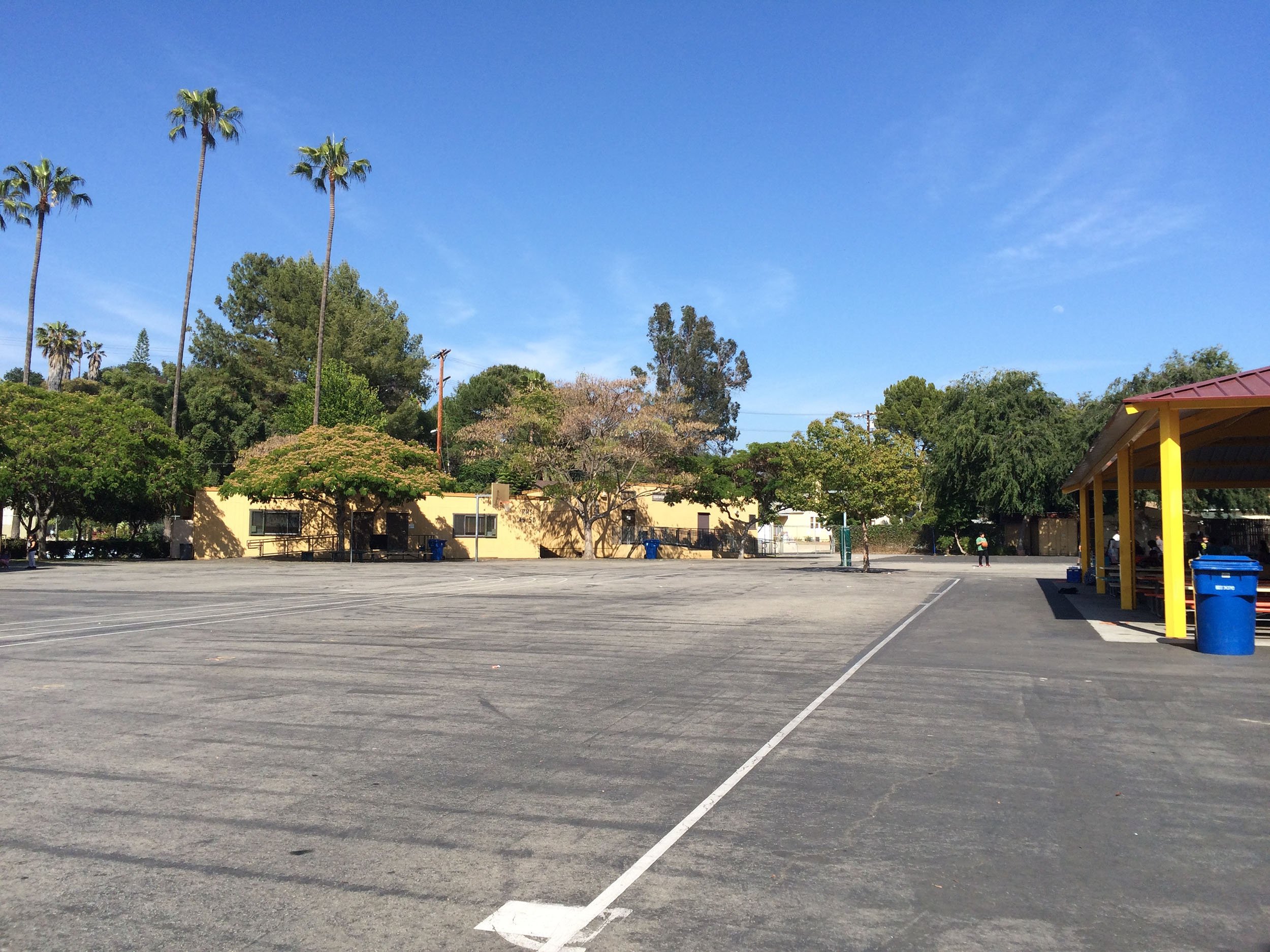
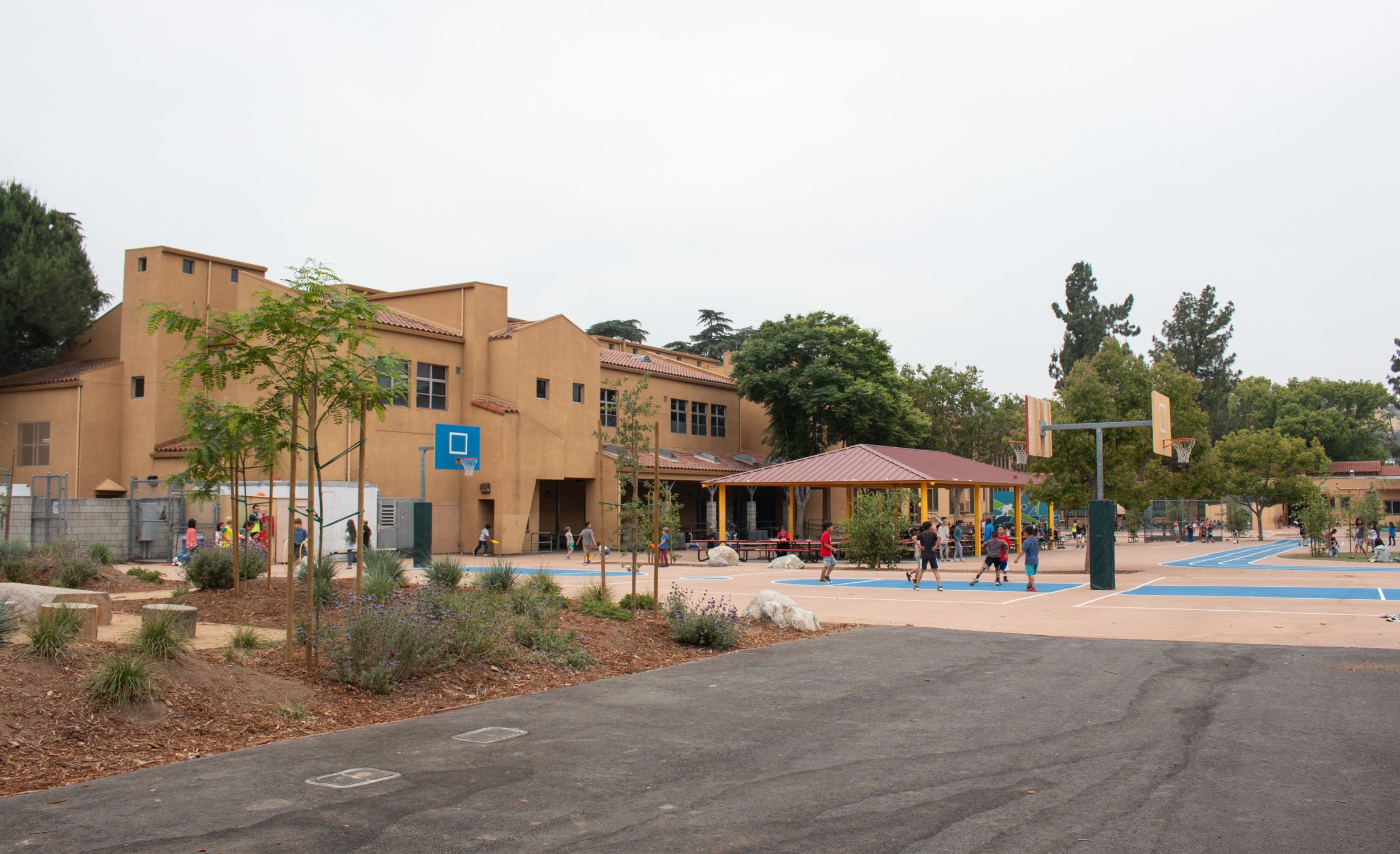
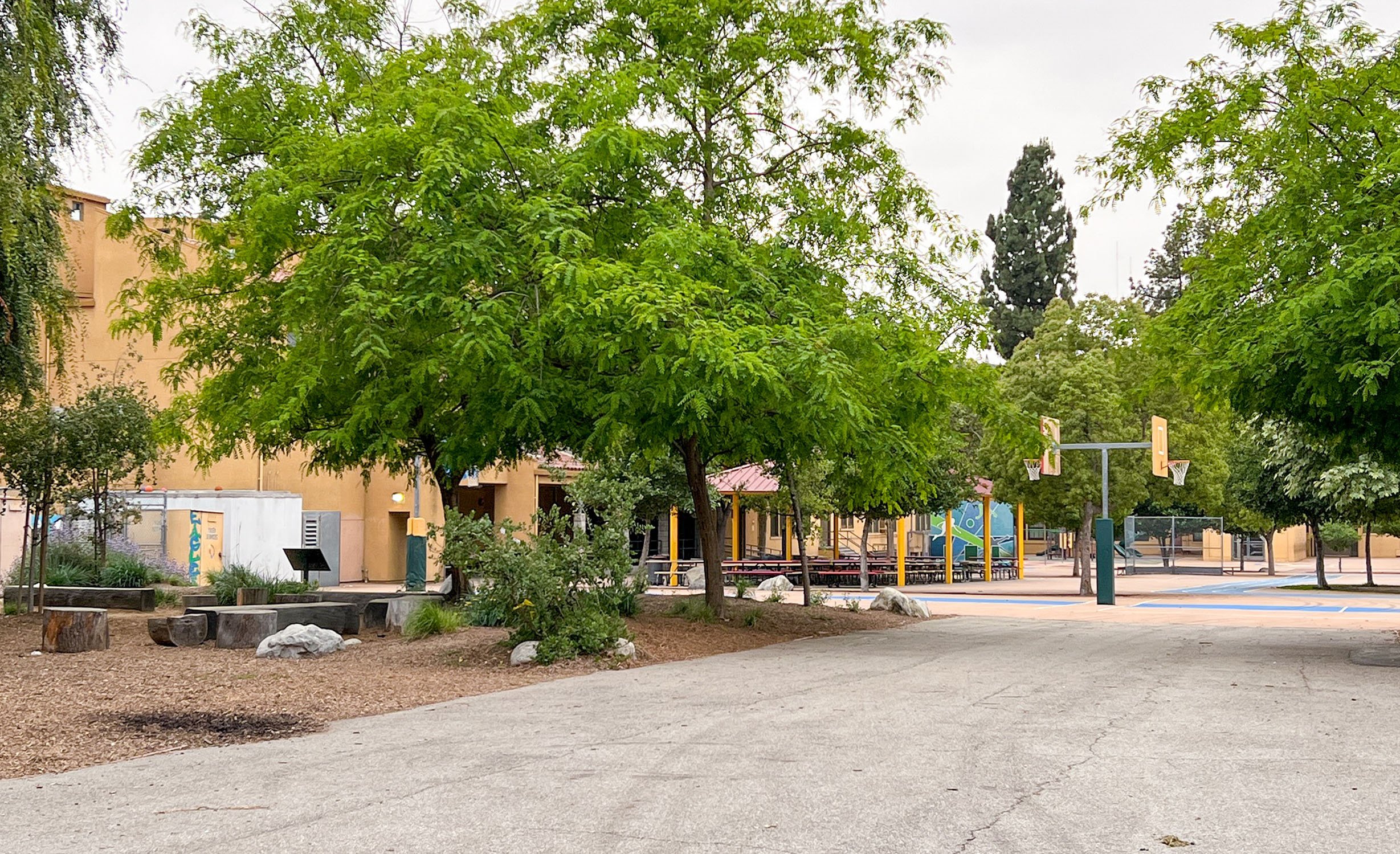
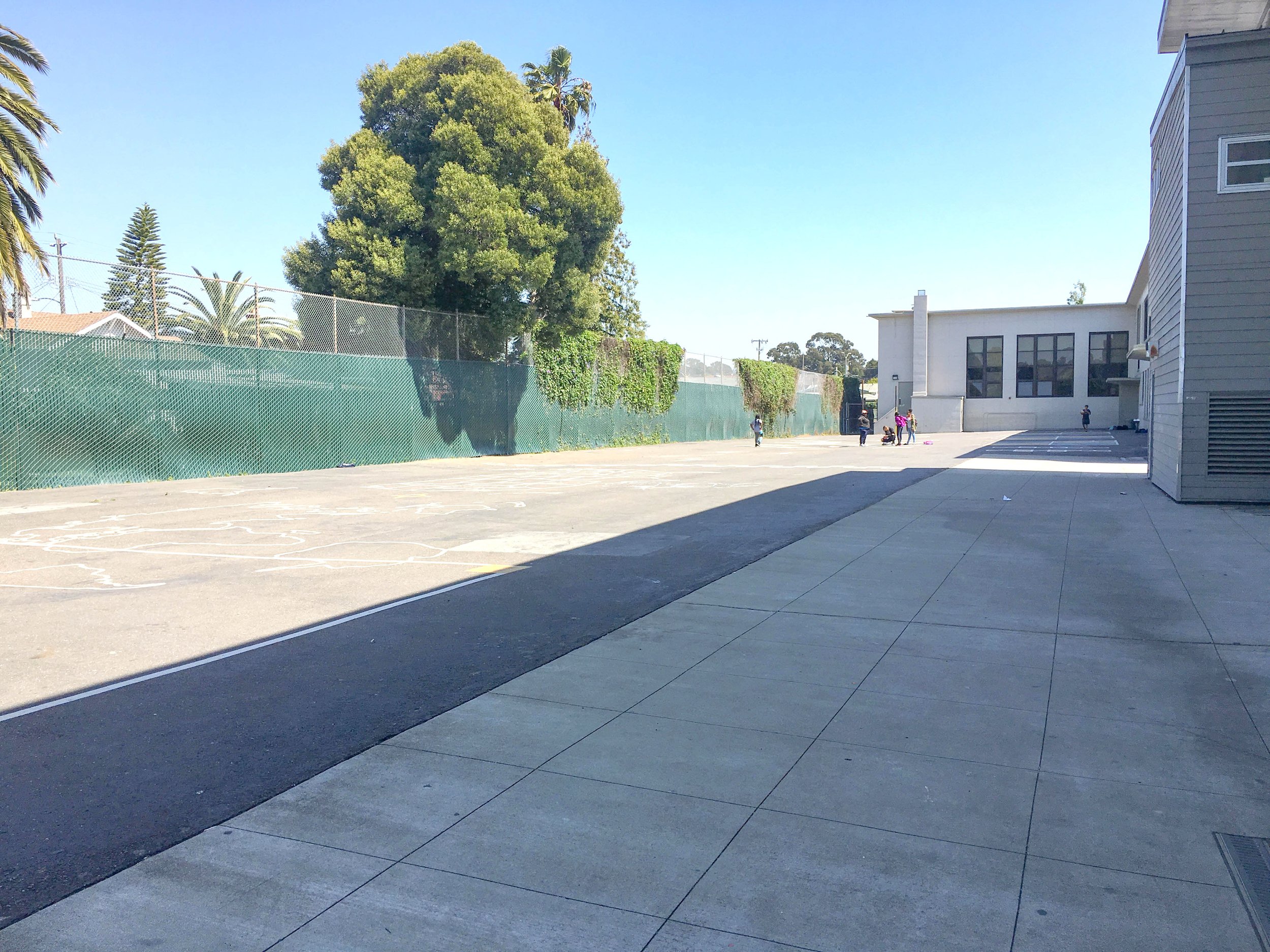

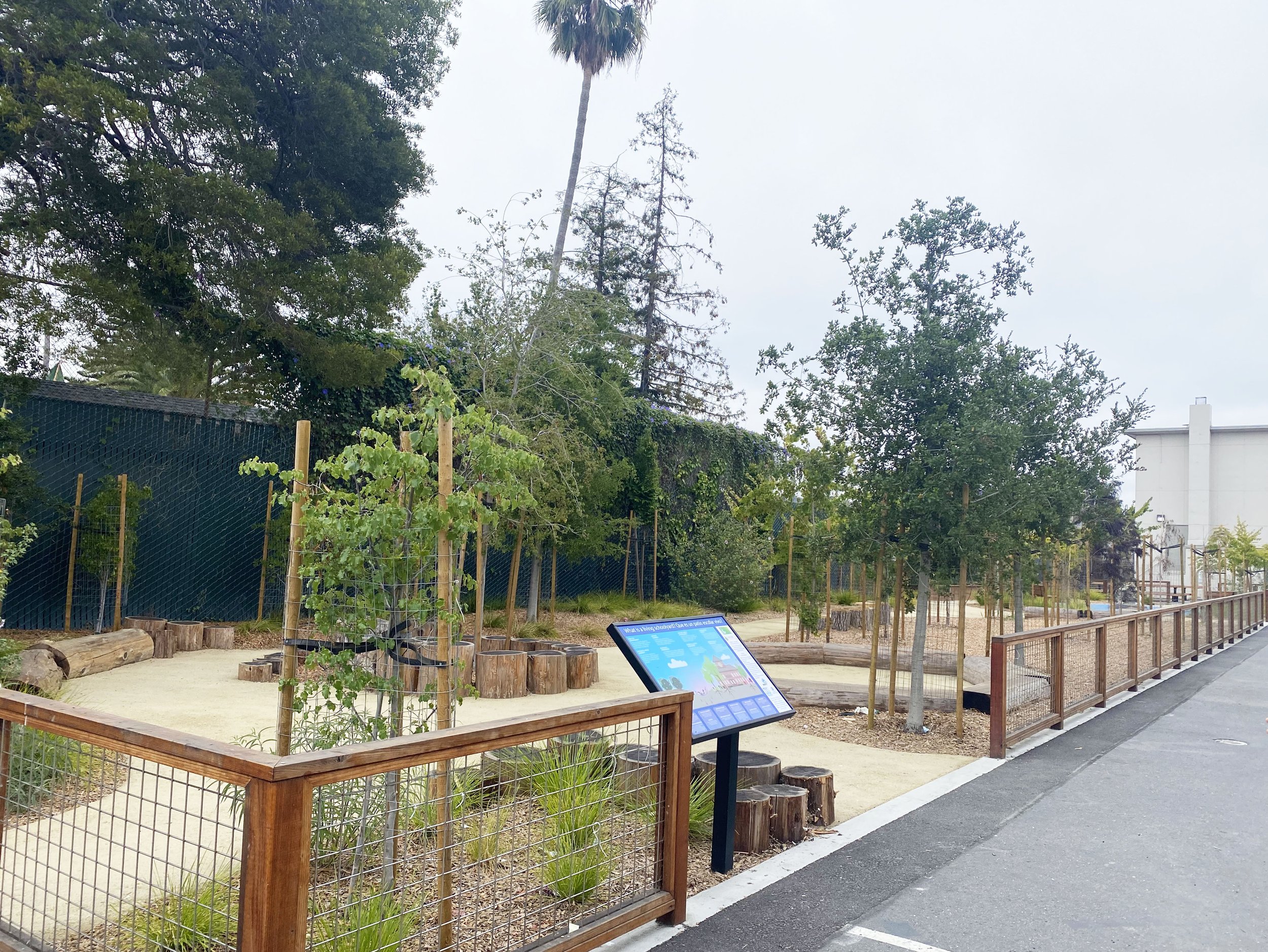
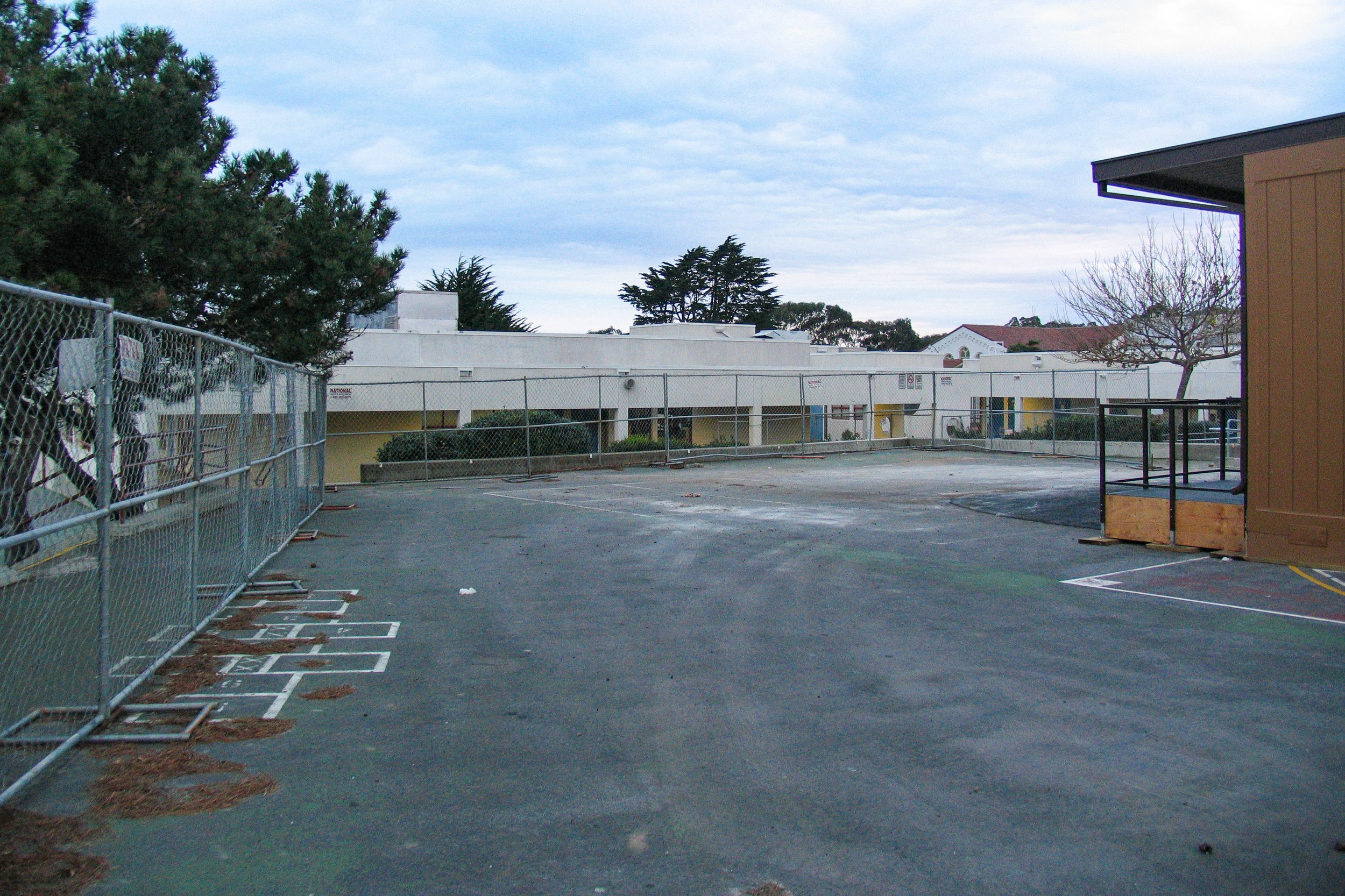
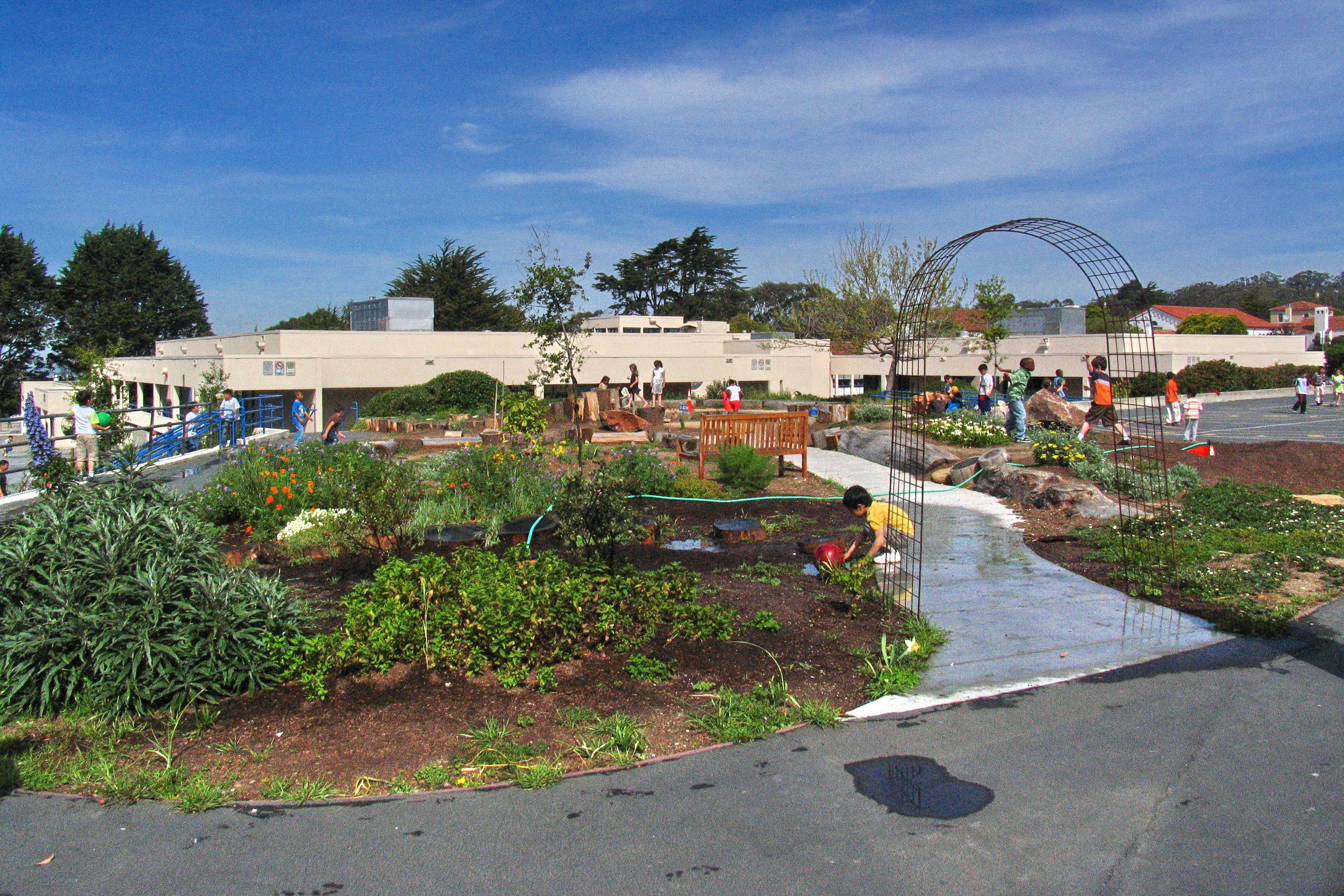
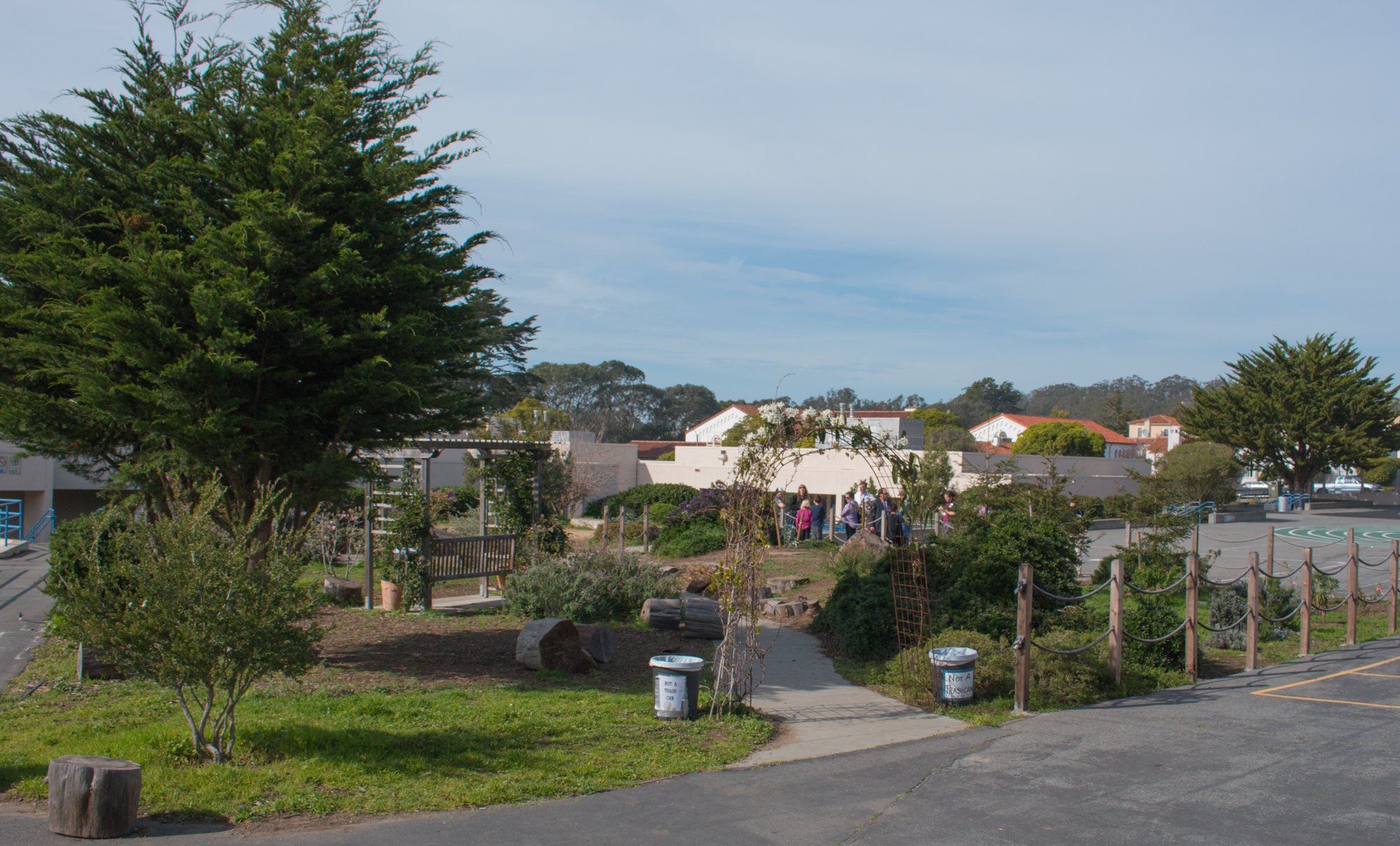
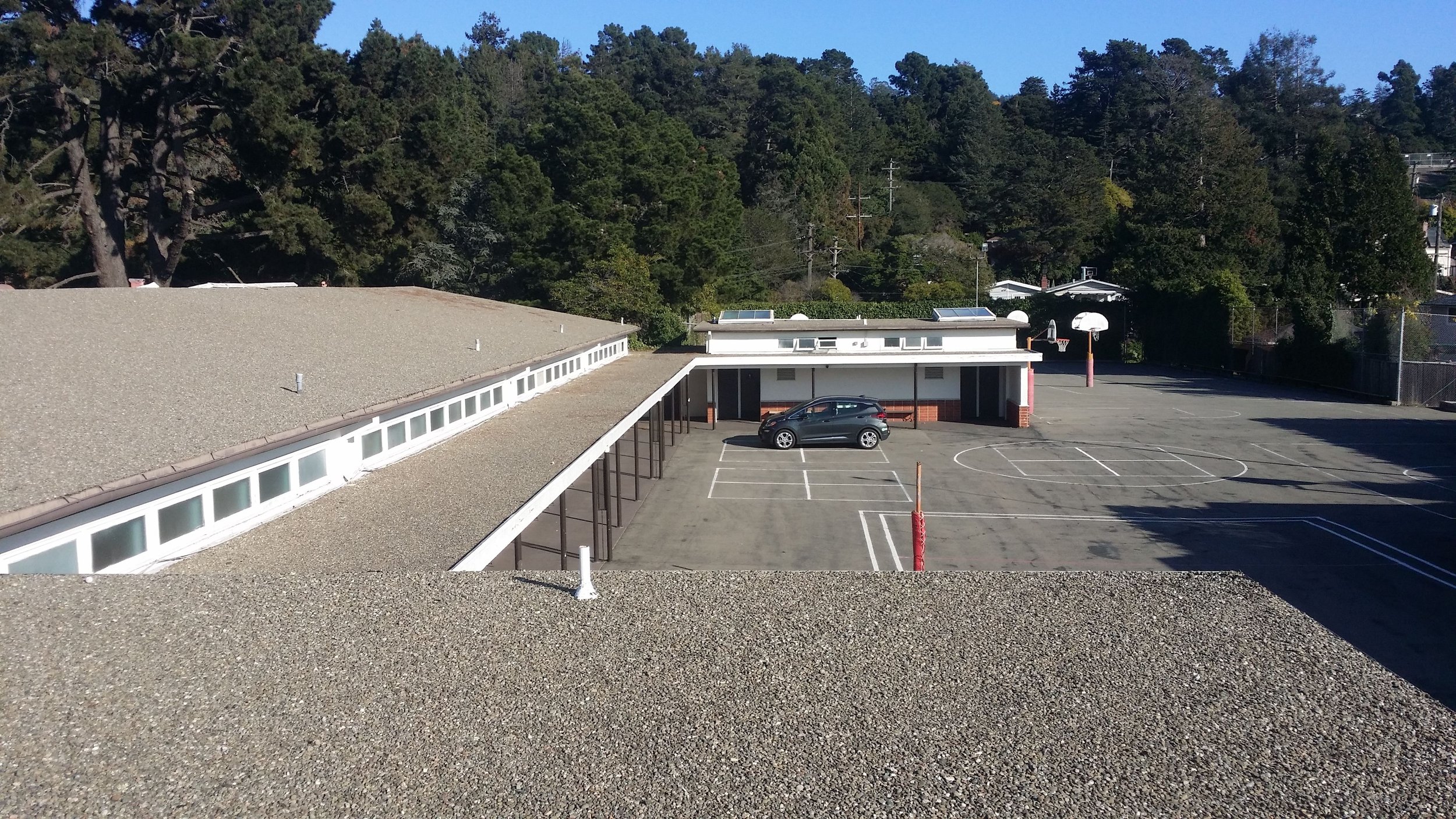
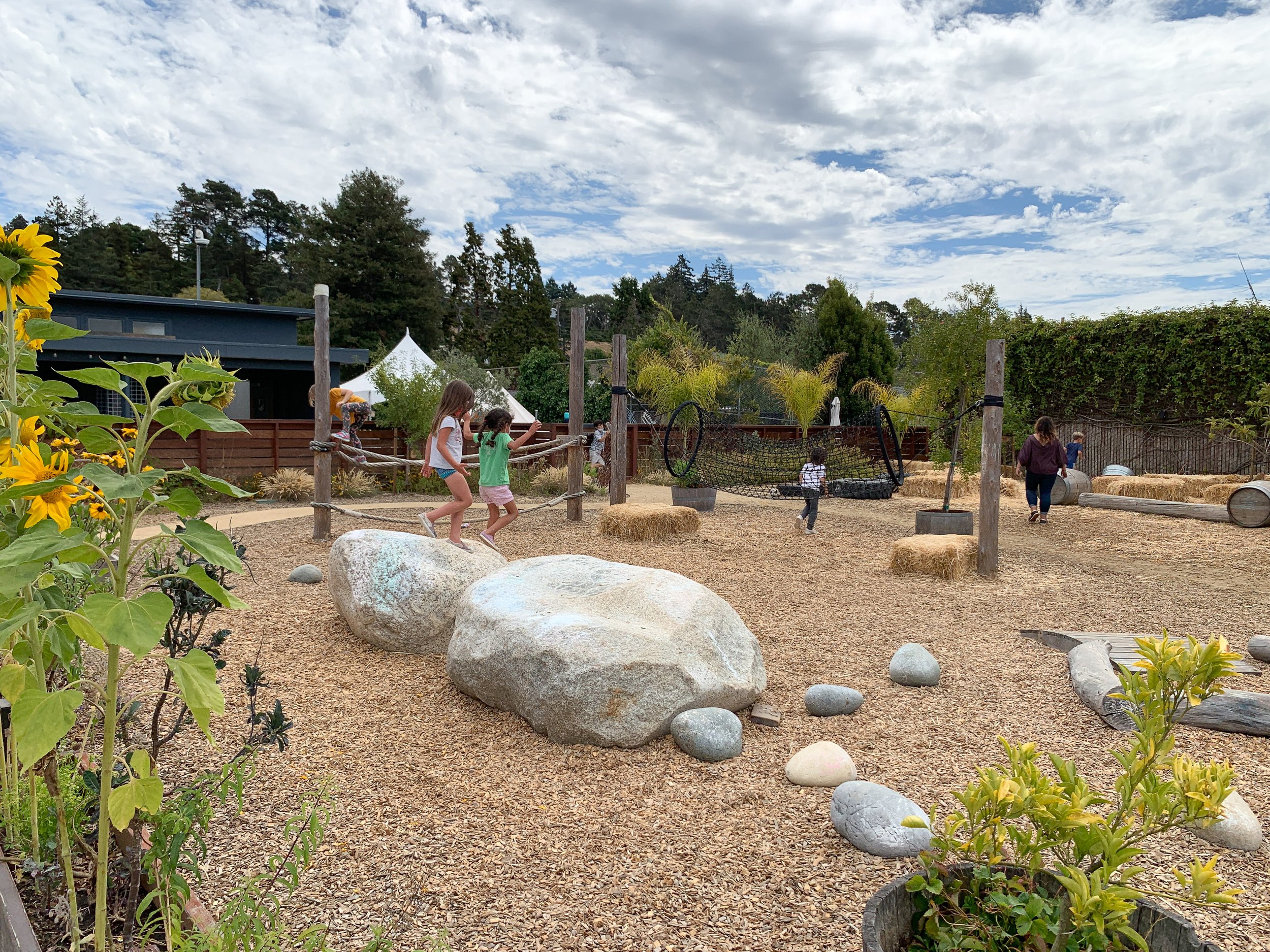
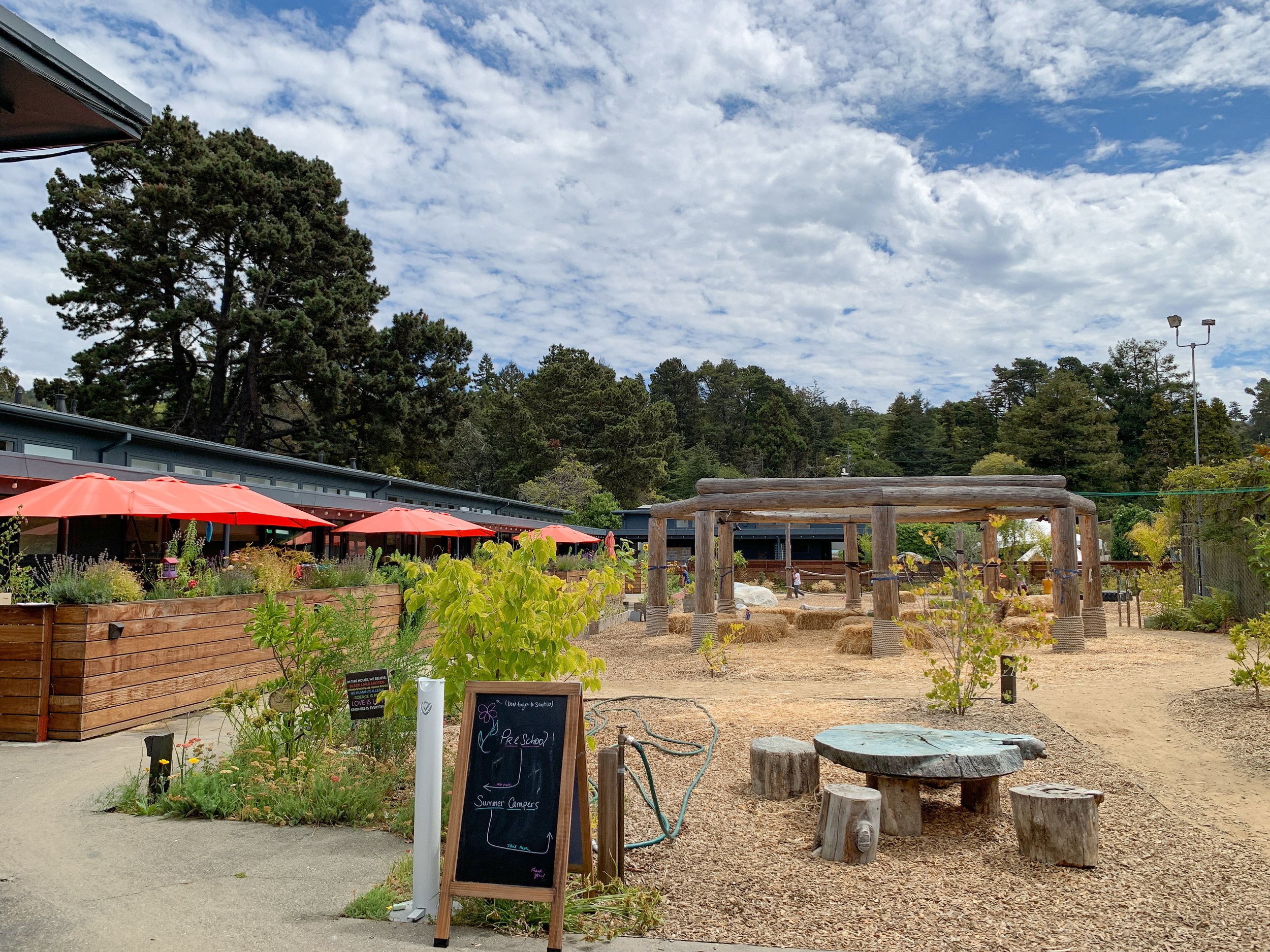
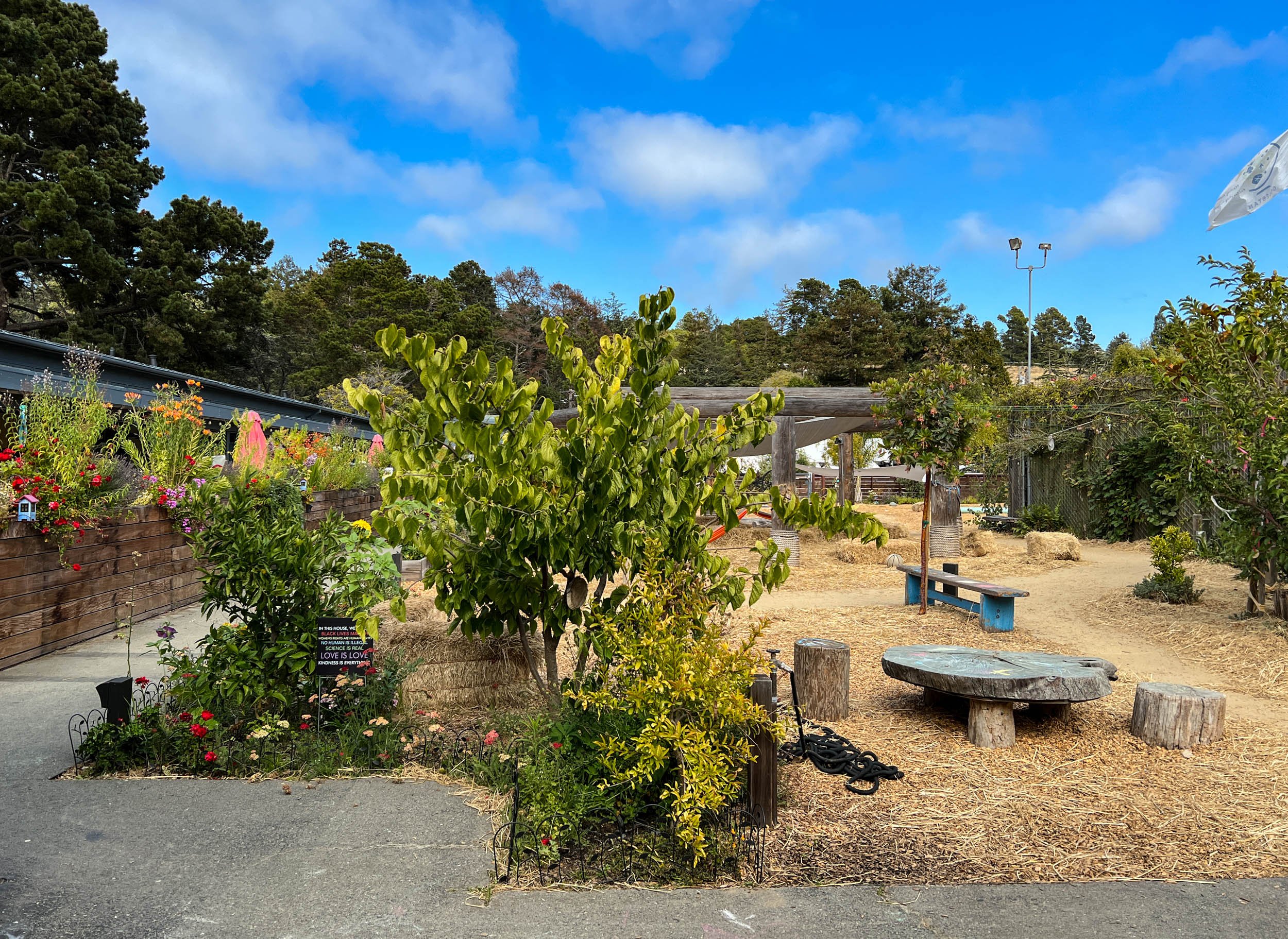
Schoolyard Transformation
View this photo gallery to see examples of schools that have transformed their schoolyards from primarily paved spaces to more diverse, green, and living landscapes.




